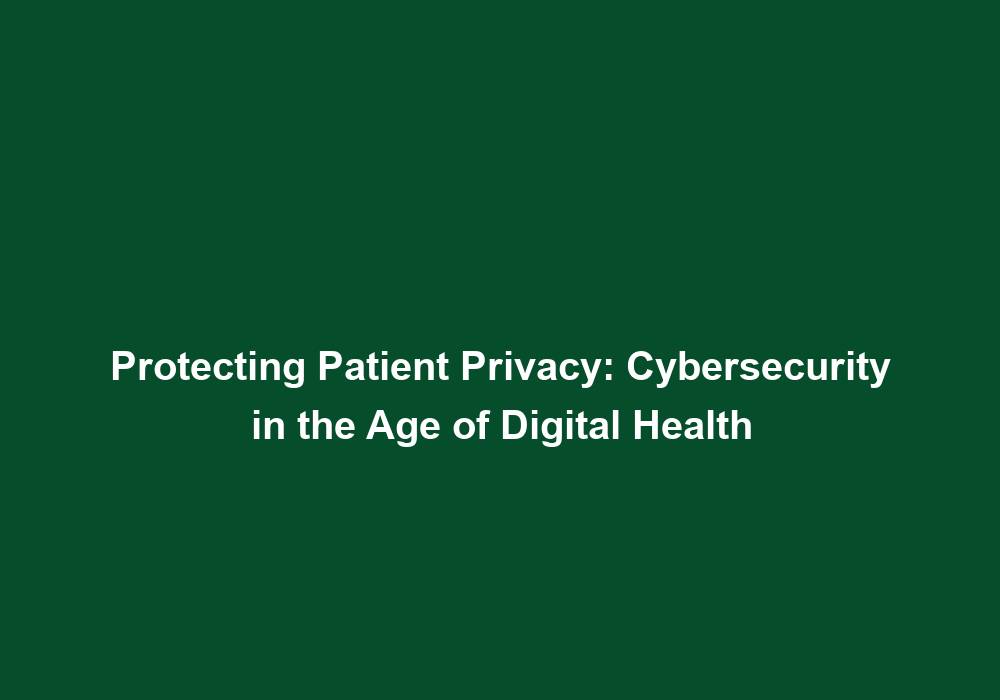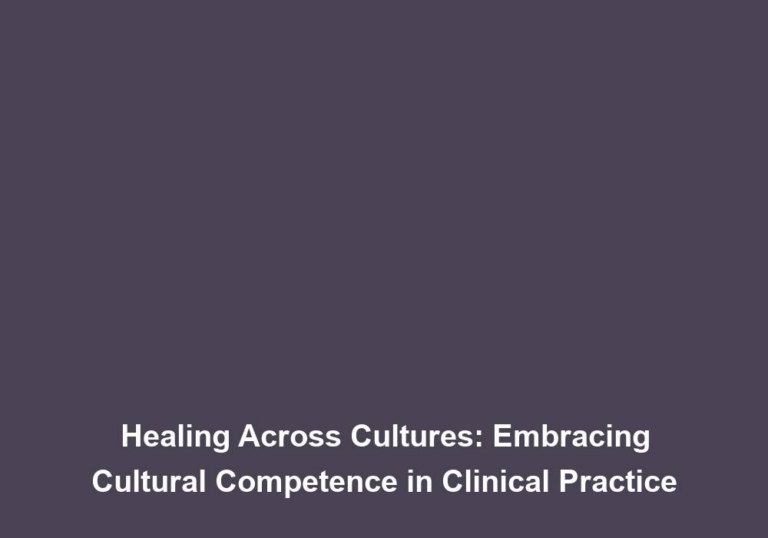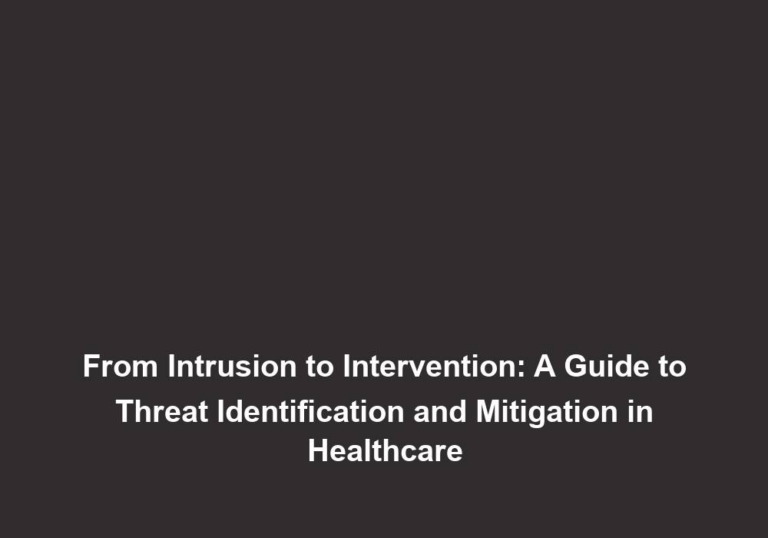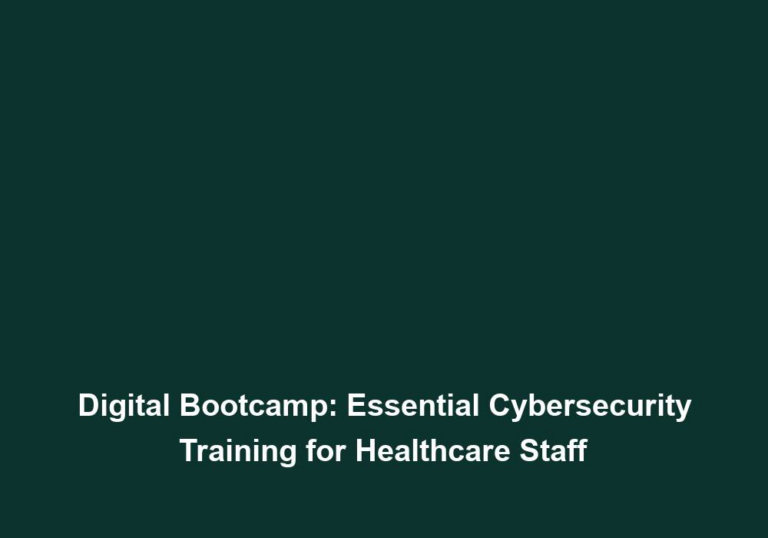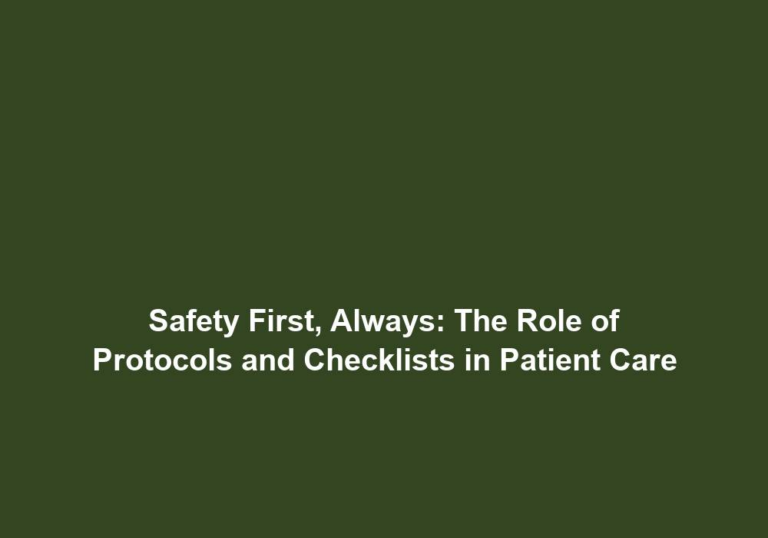Protecting Patient Privacy: Cybersecurity in the Age of Digital Health
In the era of digital health, where technology is revolutionizing the healthcare industry, it is crucial to prioritize the protection of patient privacy. With the increasing dependence on electronic medical records, telemedicine, and interconnected devices, the risk of cyber threats and data breaches has grown exponentially. This article aims to delve into the importance of cybersecurity in healthcare, the potential risks faced by patients and healthcare organizations, and effective strategies to mitigate these risks.
The Significance of Cybersecurity in Healthcare
Patient Privacy:
Patient privacy is a fundamental aspect of healthcare that must be safeguarded at all costs. Ensuring the confidentiality, integrity, and availability of patients’ personal health information (PHI) is not only a legal obligation but also an ethical commitment for healthcare providers and organizations. By implementing robust cybersecurity measures, healthcare organizations can protect patients’ privacy and maintain their trust. This includes safeguarding electronic medical records, securing communication channels, and restricting access to sensitive information only to authorized individuals.
Prevent Data Breaches:
Data breaches can have severe consequences, leading to financial losses, reputational damage, and compromise patients’ trust in the healthcare system. Healthcare organizations must take proactive steps to prevent data breaches and protect sensitive patient data. This involves implementing strong access controls, encrypting data at rest and in transit, regularly monitoring network activity for any suspicious behavior, and conducting thorough security audits to identify and address vulnerabilities.
Protecting Medical Devices:
The proliferation of medical devices, such as connected wearables and implantable devices, brings numerous benefits to patient care. However, these devices also become potential targets for cybercriminals. Securing these devices against hacking attempts is crucial to prevent unauthorized access to patient data and ensure the safety and effectiveness of the devices themselves. Healthcare organizations should ensure that medical devices have built-in security features, such as robust authentication mechanisms and encryption protocols. Regular firmware updates and patches should also be applied to address any known vulnerabilities.
Potential Risks in Digital Health
Phishing Attacks:
Phishing attacks involve deceptive techniques to trick individuals into revealing their sensitive information. Healthcare professionals and patients are equally susceptible to falling victim to these attacks, compromising the security of patient data. Healthcare organizations should educate their staff and patients about the risks associated with phishing attacks and provide guidelines on how to identify and report suspicious emails or messages. Implementing email filters and anti-phishing software can also help detect and prevent phishing attempts.
Ransomware:
Ransomware attacks have become increasingly prevalent in the healthcare industry. Cybercriminals encrypt the organization’s data and demand a ransom for its release. Healthcare organizations must have robust backup systems in place to mitigate the impact of such attacks and ensure continuity of care. Regularly backing up data to secure offsite locations and testing the effectiveness of backup and recovery procedures can help minimize the impact of ransomware attacks. Additionally, implementing strong network segmentation and access controls can limit the spread of ransomware within the organization’s network.
Internet of Things (IoT) Vulnerabilities:
The IoT ecosystem in healthcare encompasses interconnected devices, wearables, and sensors that collect and transmit patient health data. However, these devices often lack robust built-in security measures, making them vulnerable to cyber threats. It is crucial for healthcare organizations to secure these devices to prevent unauthorized access. This includes implementing strong authentication mechanisms, regularly updating firmware and software, and monitoring network traffic for any suspicious activity. Organizations should also establish clear policies and procedures for the secure deployment and management of IoT devices.
Strategies to Enhance Cybersecurity in Healthcare
Employee Training and Education:
Healthcare organizations need to prioritize cybersecurity training and education for all their staff members. By raising awareness about phishing attacks, password security, and safe browsing habits, employees can become the first line of defense against cyber threats. Regular training sessions, simulated phishing exercises, and ongoing communication about emerging threats can help employees stay vigilant and make informed decisions to protect patient privacy.
Risk Assessments:
Conducting regular risk assessments allows healthcare organizations to identify vulnerabilities in their systems and take proactive measures to address them. By evaluating the current state of cybersecurity, organizations can prioritize resources and efforts effectively. This includes identifying potential entry points for cyber attacks, assessing the effectiveness of existing security controls, and evaluating compliance with industry regulations. Risk assessments should be performed regularly and updated as new technologies and threats emerge.
Implement Strong Authentication:
Adopting strong authentication methods, such as multi-factor authentication, can significantly reduce the risk of unauthorized access. This additional layer of security ensures that only authorized individuals can access patient records and sensitive information. Healthcare organizations should implement strong password policies, require the use of unique credentials for each user, and consider biometric authentication where appropriate. Regularly reviewing and updating access privileges is also essential to prevent unauthorized access.
Regular Software Updates and Patching:
Keeping all software and devices up to date with the latest security patches is essential to address any known vulnerabilities. Regular updates protect against known threats and minimize the risk of exploitation. Healthcare organizations should establish a patch management process to ensure timely updates of software and firmware across all systems. This includes not only operating systems and applications but also medical devices and IoT devices used within the organization.
Encryption and Data Backup:
Implementing encryption techniques for data at rest and in transit ensures that even if unauthorized access occurs, the data remains unreadable. Healthcare organizations should adopt industry-standard encryption algorithms and protocols to protect sensitive patient data. Additionally, maintaining regular backups of patient data helps mitigate the impact of data breaches and ransomware attacks. Backups should be stored securely and tested regularly to ensure data integrity and availability in case of an incident.
Third-Party Vendor Assessment:
Healthcare organizations often rely on third-party vendors for various services. It is crucial to assess the security measures adopted by these vendors and ensure that they meet industry standards and compliance regulations. Conducting thorough vendor assessments, including security audits and due diligence, helps identify potential risks and ensures that vendors have robust security controls in place. Organizations should also include security requirements in vendor contracts and establish clear communication channels for reporting and addressing any security incidents.
Incident Response Plan:
Developing a comprehensive incident response plan helps healthcare organizations effectively respond to security incidents. This plan should include steps to contain, remediate, and learn from any cybersecurity breach to prevent future occurrences. It should outline roles and responsibilities, communication protocols, and procedures for evidence preservation and legal reporting. Regular testing and updating of the incident response plan is essential to ensure its effectiveness during a real incident. Healthcare organizations should also establish partnerships with external cybersecurity experts and law enforcement agencies to facilitate timely and effective incident response.
In conclusion, as the healthcare industry embraces digital transformation, protecting patient privacy and ensuring cybersecurity has become indispensable. By understanding the potential risks, implementing robust security measures, and prioritizing employee education and training, healthcare organizations can safeguard patient data and maintain trust in the age of digital health.

